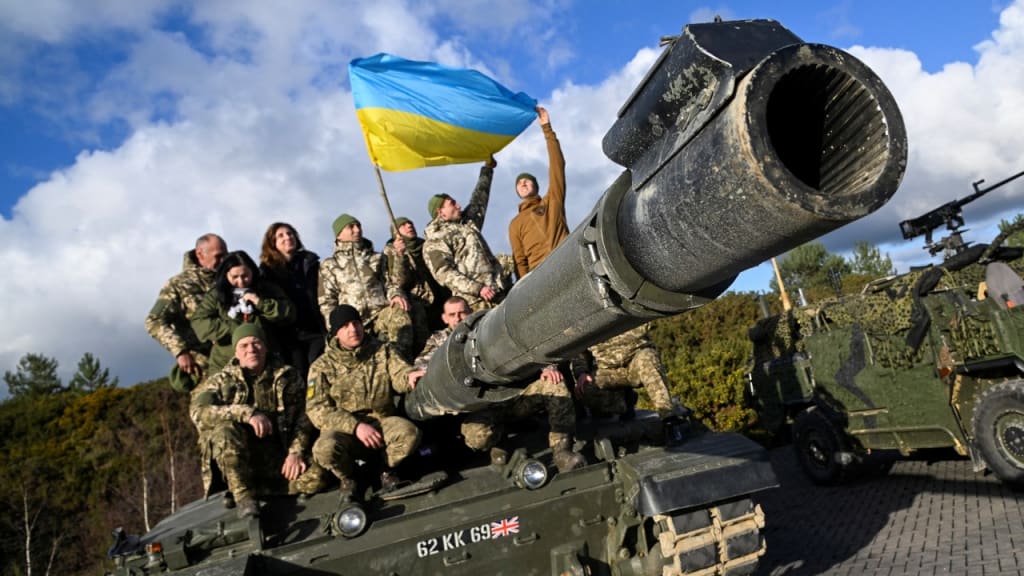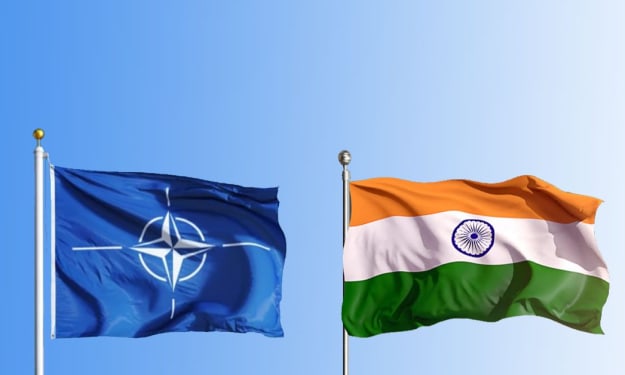effects of DEPLETED URANIUM in UKRAINE
Nuclear WAR in Ukraine

DEPLETED URANIUM is a dense by-product that remains after uranium is enriched for nuclear reactors or nuclear weapons. Although it is still radioactive, its radioactivity is significantly lower compared to natural uranium ore, as it contains much lower levels of U-235 and U-234 isotopes.
The high density of depleted uranium makes it valuable for use in weapons. It has the ability to self-ignite under extreme temperatures and pressures and becomes sharper as it penetrates armor plating, a phenomenon known as "adiabatic shearing," according to the International Atomic Energy Agency. When a depleted uranium penetrator strikes a target, its surface temperature rapidly increases, leading to localized softening in the form of adiabatic shear bands. This keeps the tip sharp and prevents the projectile from mushrooming, as seen with tungsten penetrators. Additionally, the pyrophoric nature of uranium increases the likelihood of causing explosions in the target's fuel and ammunition compartments.
As a result, when a depleted uranium penetrator strikes the armor of a tank, it swiftly cuts through before exploding, creating a burning cloud of dust and metal. The intense heat generated during the explosion further exacerbates the damage by igniting the fuel and ammunition stored within the tank.
The United States, Britain, Russia, China, France, and Pakistan are known producers of uranium weapons, which are not classified as nuclear weapons by the International Coalition to Ban Uranium Weapons. Additionally, 14 other countries are reported to store such weapons.
There has been extensive research and controversy surrounding the effects of exposure to depleted uranium weapons, particularly in conflicts such as the 1990-1991 Gulf War and the 1999 NATO bombing of Yugoslavia. Approximately 340 tonnes of depleted uranium were used in munitions during the Gulf War, and an estimated 11 tonnes were used in the Balkans in the late 1990s, according to the Royal Society.
Ingesting or inhaling depleted uranium, even in its depleted form, is hazardous as it can suppress renal function and increase the risk of various cancers. Opponents of these weapons, such as the International Coalition to Ban Uranium Weapons, argue that the dust generated by their use can be inhaled, while missed munitions can contaminate groundwater and soil.
However, countries like the United States and Britain argue that it would be difficult to inhale enough depleted uranium dust to cause harm, as stated in their guidelines. The Royal Society, in a 2002 report, concluded that the risks of kidney and organ damage from depleted uranium munitions are very low for most soldiers in the battlefield and those residing in conflict zones. The report also acknowledged that, under extreme conditions and worst-case assumptions, soldiers exposed to high levels of depleted uranium could experience adverse effects on the kidney and lung. However, it emphasized that the associated health risks due to depleted uranium in most scenarios would be very low.
Studies conducted on soldiers have shown a small increase in mortality rates among veterans, primarily attributed to accidents rather than disease. The International Atomic Energy Agency (IAEA) stated that it cannot establish a link between these mortality rates and exposure to depleted uranium. Furthermore, the IAEA reported that a small number of Gulf War veterans have inoperable fragments of depleted uranium embedded in their bodies, resulting in elevated excretion levels of uranium in their urine, but without observable health effects.
Regarding the impact of depleted uranium on Serbia and Montenegro, a United Nations Environment Programme report found no significant, widespread contamination. However, some Serbian politicians have disputed these findings and claimed an increased incidence of malignancies and deaths from malignant tumors in Serbia.
The effects of depleted uranium weapons remain a topic of debate, with ongoing studies and varying perspectives on their long-term health and environmental implications.
About the Creator
Suganthan
Hi world! I am from Wonder of Asia Srilankan. Happy to write stories and History blog.
Enjoyed the story? Support the Creator.
Subscribe for free to receive all their stories in your feed. You could also pledge your support or give them a one-off tip, letting them know you appreciate their work.






Comments
There are no comments for this story
Be the first to respond and start the conversation.